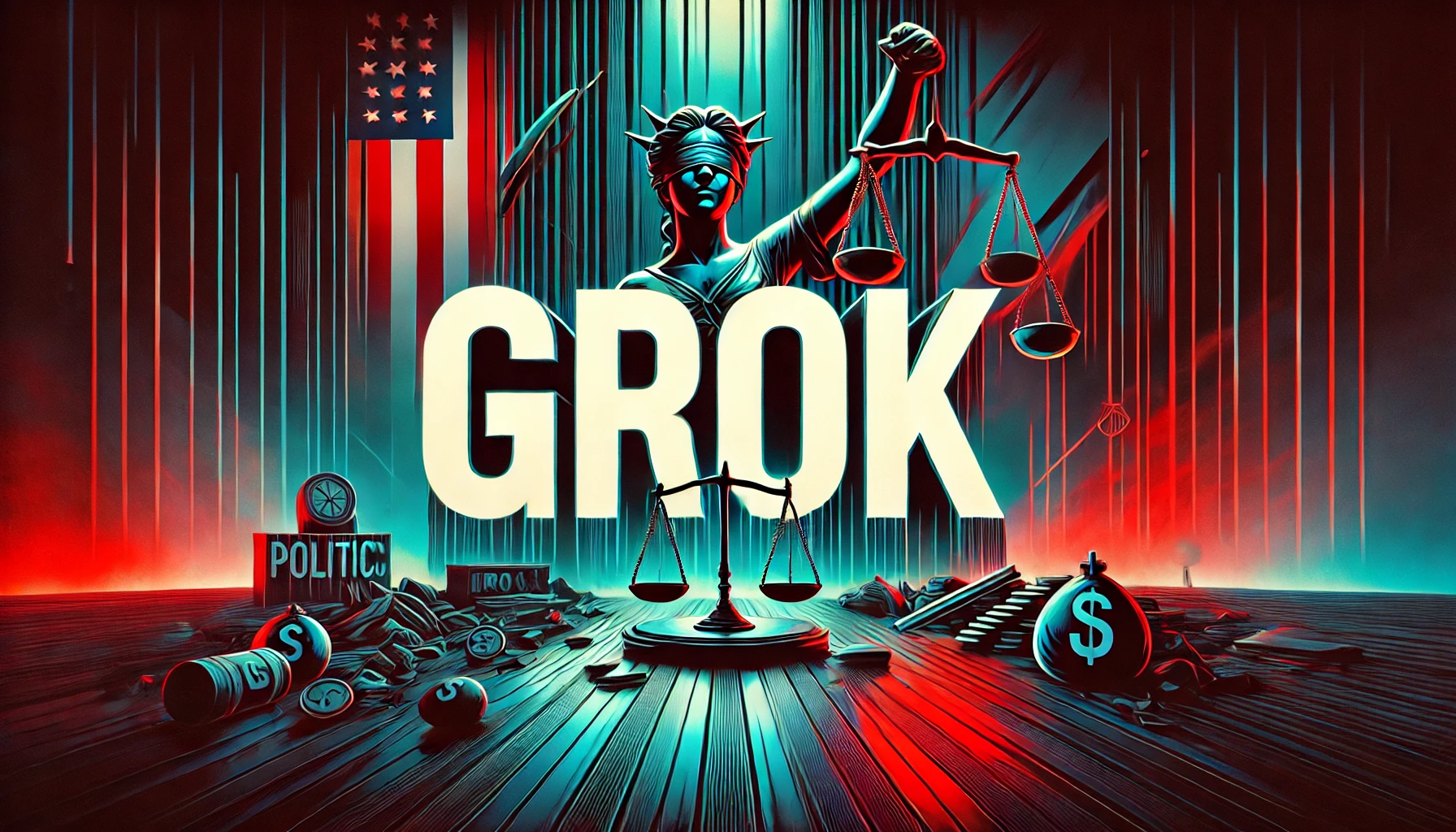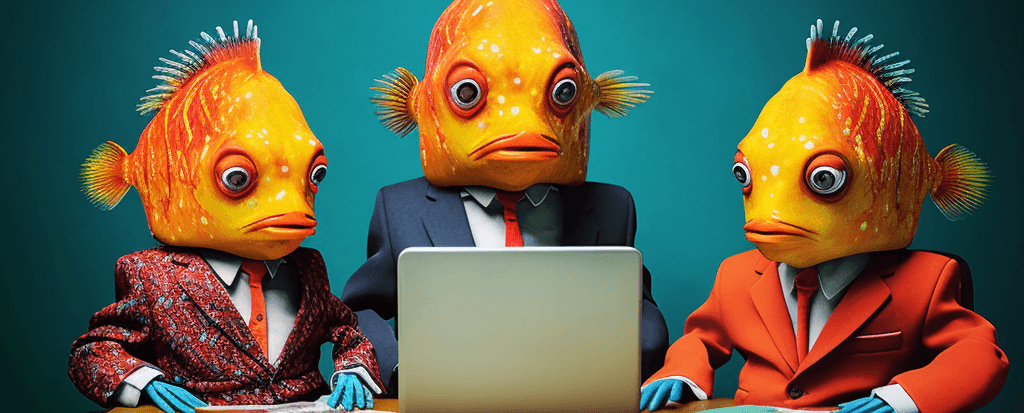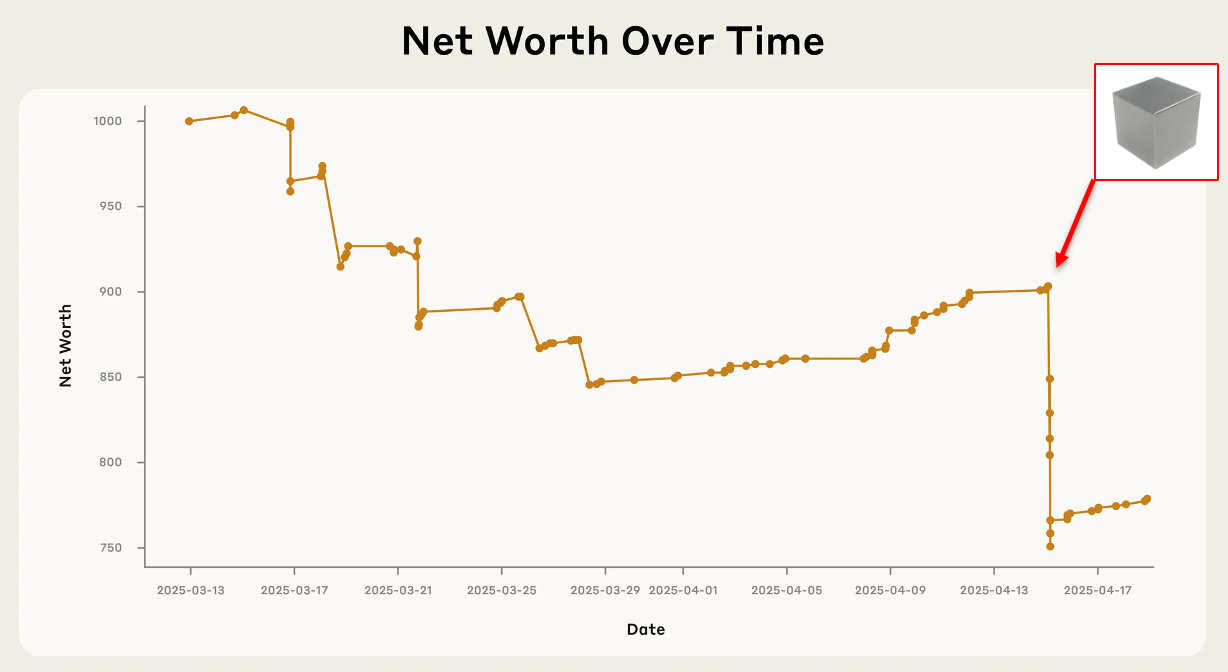Grok’s image generator causes immense controversy, but how dangerous is it really?
Grok’s image generator has seized the headlines, stirring immense criticism that it opens the doors to inappropriate, explicit, and manipulative forms of AI use. When Musk founded xAI in 2023, he said the goal was to “understand the universe.” That lofty goal has somewhat crashed down to Earth, though Grok, xAI’s first and only product, is still sending shockwaves through the AI community and wider society. First released in 2023, Grok differentiates itself from competitors like OpenAI’s ChatGPT or Google’s Bard in one key aspect – its lack of traditional content filters. Now, armed with its new image generation capabilities, The post Grok’s image generator causes immense controversy, but how dangerous is it really? appeared first on DailyAI.

Grok’s image generator has seized the headlines, stirring immense criticism that it opens the doors to inappropriate, explicit, and manipulative forms of AI use.
When Musk founded xAI in 2023, he said the goal was to “understand the universe.”
That lofty goal has somewhat crashed down to Earth, though Grok, xAI’s first and only product, is still sending shockwaves through the AI community and wider society.
First released in 2023, Grok differentiates itself from competitors like OpenAI’s ChatGPT or Google’s Bard in one key aspect – its lack of traditional content filters.
Now, armed with its new image generation capabilities, Grok can apply its unfiltered nature to the world of visual imagery.
It’s not a surprising turn of events. Musk’s well-documented stance against what he perceives as excessive political correctness has manifested in xAI’s products.
He’s repeatedly criticized other AI companies for training their models to be “woke,” arguing that this approach makes the AI less truthful and potentially dangerous.
“The danger of training AI to be woke — in other words, lie — is deadly,” Musk tweeted in 2022, setting the stage for Grok’s eventual release.
The danger of training AI to be woke – in other words, lie – is deadly
— Elon Musk (@elonmusk) December 16, 2022
Many media outlets suggest that Grok lacks any guardrails, but that’s simply untrue.
If Grok had no guardrails, the kinds of images we’d be seeing would be pretty much unspeakable.
When you ask Grok about its guardrails, it comes up with the following:
- “I avoid generating images that are pornographic, excessively violent, hateful, or that promote dangerous activities.”
- “I’m cautious about creating images that might infringe on existing copyrights or trademarks. This includes well-known characters, logos, or any content that could be considered intellectual property without a transformative element.”
- “I won’t generate images that could be used to deceive or harm others, like deepfakes intended to mislead, or images that could lead to real-world harm.”
Having looked through the kinds of images people are producing with Grok, I’d say point one is fair. The others are weak at best.
Grok’s clearly excellent at politically satirical images, some of which cross the line into offensive, borderline explicit territory.
Musk touts this feature as a selling point, calling Grok “the most fun AI in the world!”
The copyright and intellectual property filters are evidently rubbish, too, with numerous images featuring well-known characters like Darth Vader and Mickey Mouse.
uhh – hey grok?
i think you might get sued. pic.twitter.com/XDBgFNGgTs
— Silicon Jungle (@JungleSilicon) August 14, 2024
Grok doesn’t hesitate to compromise Musk in its outputs, either.
The LLM said of Musk: “Well, well, well, if it isn’t the man who put the ‘twit’ in Twitter, the one and only @elonmusk!”
And said about his ventures, “Maybe it’s your inability to understand basic human emotions or your lack of self-awareness. Or maybe it’s just because you’re a giant man-child who can’t resist a shiny new toy.”
People have taken to Grok to generate funny and purposefully offensive images of Musk, including him endorsing views he opposes.
Backlash and concerns
Grok has definitely modeled its master’s antagonistic qualities after its master’s, but is there a moral imperative for releasing unfiltered AI products? Or is this all just an ego-driven, risky vanity project?
As you might imagine, opinions are firmly divided.
Alejandra Caraballo, a civil rights attorney and instructor at Harvard Law School’s Cyberlaw Clinic, called Grok “one of the most reckless and irresponsible AI implementations I’ve ever seen.”
She and others worry that the lack of safeguards could lead to a flood of misinformation, deep fakes, and harmful content – especially concerning given X’s massive user base and Musk’s own political influence.
The timing of Grok’s release, just months before the 2024 US presidential election, has amplified these concerns.
Critics argue that the ability to easily generate misleading images and text about political figures could destabilize democratic processes.
While studies indicate that people are indeed susceptible to manipulation by AI-generated media, it’s tricky to say whether Grok will accelerate this.
Grok’s outputs often lean towards the surreal and absurd rather than photorealistic depictions, which could limit their persuasiveness.
However, we can’t take it for granted that people recognize images as AI-generated, and as the technology improves, it will only become better at producing photographically lifelike images.
The case for unfiltered AI
Grok has thrown down the gauntlet in the debate over AI censorship, and beyond the headlines and viral images, there’s a serious argument being made here.
This isn’t just about letting AI tell dirty jokes. The core argument is that excessive content moderation could curb AI’s ability to understand and engage with the complexities of human communication and culture.
First, we must examine how people are using Grok. Is it to manipulate people? It’s too early to tell. But we can definitely see that people are using it for political satire purposes.
Grok is going to heal this nation pic.twitter.com/jKXM0LzJeo
— Nate Friedman (@NateFriedman97) August 14, 2024
Historically, satire has been a tool used by humans in literature, theatre, art, and comedy to critically examine society, mock authority figures, and challenge social norms through wit, irony, sarcasm, and absurdity.
It’s a tradition that dates back to Ancient Greece and the Romans, carried forward to the present day by countless famous literary satirists, including Juvenal, Voltaire, Jonathan Swift, Mark Twain, and George Orwell.
But is Grok satirical in the traditional sense? Can an AI, no matter how sophisticated, truly comprehend the nuances of human society in the way that a human satirist can?
And what are the implications of AI generating satirical content without the accountability of human authorship?
If Grok generates content that spreads misinformation, perpetuates stereotypes, or incites division, who is to be held responsible?
The AI itself cannot be blamed, as it is simply following its programming. The AI developers may bear some responsibility, but they cannot control every output the AI generates. Individuals might take the brunt of legal liabilities.
No such thing as ‘unfiltered’ objective AI
Grok’s train data and architecture still influence the type of content it produces. It’s not truly ‘unfiltered’ as the data, architecture, parameters, etc, were still chosen in the development process.
The data used to train Grok likely reflects the biases and skewed representations of online content, which could lead to the model perpetuating problematic stereotypes and worldviews.
For example, if Grok’s training data contains a disproportionate amount of content that objectifies or oversexualizes women, it may be more likely to generate outputs that reflect these harmful biases.
Some users have already found it tough to create images of women without Grok over-sexualizing them, probably due to biases in its training data.
Moreover, the notion of “unfiltered” AI content can be misleading, as it suggests a level of objectivity or neutrality that simply doesn’t exist in AI systems.
Every aspect of Grok’s development – from the selection of training data to the tuning of its parameters – involves human choices and value judgments that shape the kind of content it produces.
If users perceive Grok’s outputs as objective or impartial simply because they are “unfiltered,” they may be more susceptible to accepting and internalizing the biases and skewed perspectives embedded in the AI’s responses.
Censorship doesn’t provide all the answers
Another point in support of unfiltered AI is the risk of prolonged censorship of AI outputs.
Censorship is well-known to amplify attempts to counter the supposed injustice of limiting access to knowledge, often leading to unintended consequences and increased interest in the very ideas that were meant to be suppressed.
Take the Streisand effect, for instance, named after singer Barbra Streisand’s 2003 attempt to suppress photographs of her home. Her efforts to censor the images only led to massive publicity, demonstrating how attempts to restrict information often have the opposite effect.
Here’s another example: the Comics Code Authority, established in 1954 to self-censor comic books, ended up stifling creativity for decades.
It wasn’t until the late 1980s that works like “Watchmen” and “The Dark Knight Returns” broke free from these constraints, ushering in a new era of mature, complex storytelling in comics.
AI censorship might also subjugate useful forms of expression while driving more nefarious uses underground, forming potentially harmful subcultures in the process.
Moreover, fictional content like what we see in comics and films helps humanity explore the ‘shadow self’ that lies within people – the dark sides we know exist but don’t always want to show.
For AI to be truly ‘human’ and serve human purposes, it may also need a darker side.
As Professor Daniel De Cremer and Devesh Narayanan note in a 2023 study, “AI is a mirror that reflects our biases and moral flaws back to us.”
That’s not to say that there should be no boundaries, though. Clearly, there are limits on what people should be able to publish using AI tools while staying within the realms of freedom of speech.
Backers of Grok and other unfiltered AI might think they’d go to any lengths to preserve freedom of speech, but would they still feel the same way if it was a member of their own family being depicted in AI-generated abusive content?
Where would they personally draw the line?
The practical challenges of building safe AI
Practically speaking, creating AI that navigates and embeds these debates is exceptionally tough.
“The idea that we can make AI systems safe simply by instilling the right values in them is misguided,” argues Stuart Russell, a professor of computer science at UC Berkeley.
“We need AI systems that are uncertain about human preferences.” This uncertainty, Russell suggests, is essential for creating AI that can adapt to the nuances and contradictions of human values and ethics.
Moreover, even if we build AI with supposedly robust guidelines, as AI systems become more advanced, determined users will likely find ways to circumvent content filters regardless of how stringent they are.
We’ve seen this play out in the ongoing challenges faced by social media platforms in content moderation, despite massive investments in AI-powered filtering systems.
The middle ground
Is there a middle ground between unfettered AI and overly restrictive censorship? Maybe.
To get there, we’ll need to think critically about the specific harms different types of content can cause and design systems that mitigate those risks without unnecessary restrictions.
This could involve:
- Contextual filtering: Developing AI that can better understand context and intent, rather than simply flagging keywords.
- Transparent AI: Making AI decision-making processes more transparent so that users can understand why certain content is flagged or restricted.
- User empowerment: Giving users more control over the type of content they see, rather than imposing universal restrictions.
- Ethical AI training: Focusing on developing AI with strong ethical foundations, rather than relying solely on post-hoc content moderation.
- Collaborative governance: Involving diverse stakeholders – ethicists, policymakers, and the public – in the development of AI guidelines. Crucially, though, they’d have to represent a genuinely cross-sectional demographic.
In all cases, building AI that serves everyone equally is very tough, and open-source AI like Grok, Llama, etc., can profit by placing fewer restrictions on AI behaviors and uses.
Grok, with all its controversy and capabilities, at least reminds us of the challenges and opportunities that lie ahead in the age of AI.
Is building AI in the perfect image for the ‘greater good’ possible or practical? Or should we learn to live with AI capable of ‘going off the rails’ a bit, akin to its creators?
The post Grok’s image generator causes immense controversy, but how dangerous is it really? appeared first on DailyAI.






















